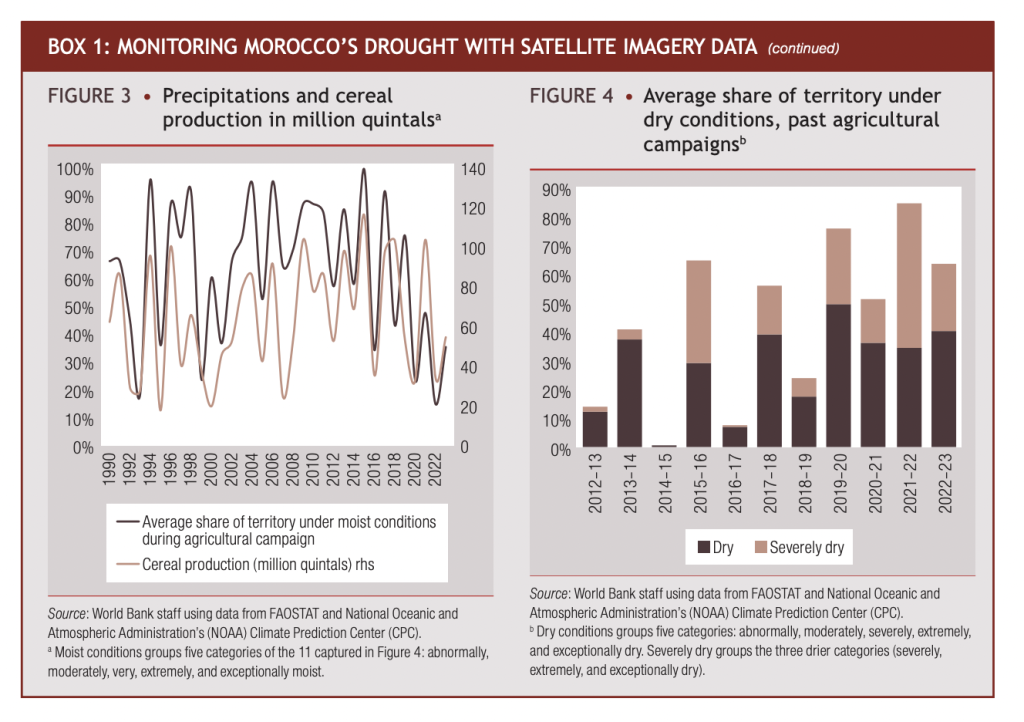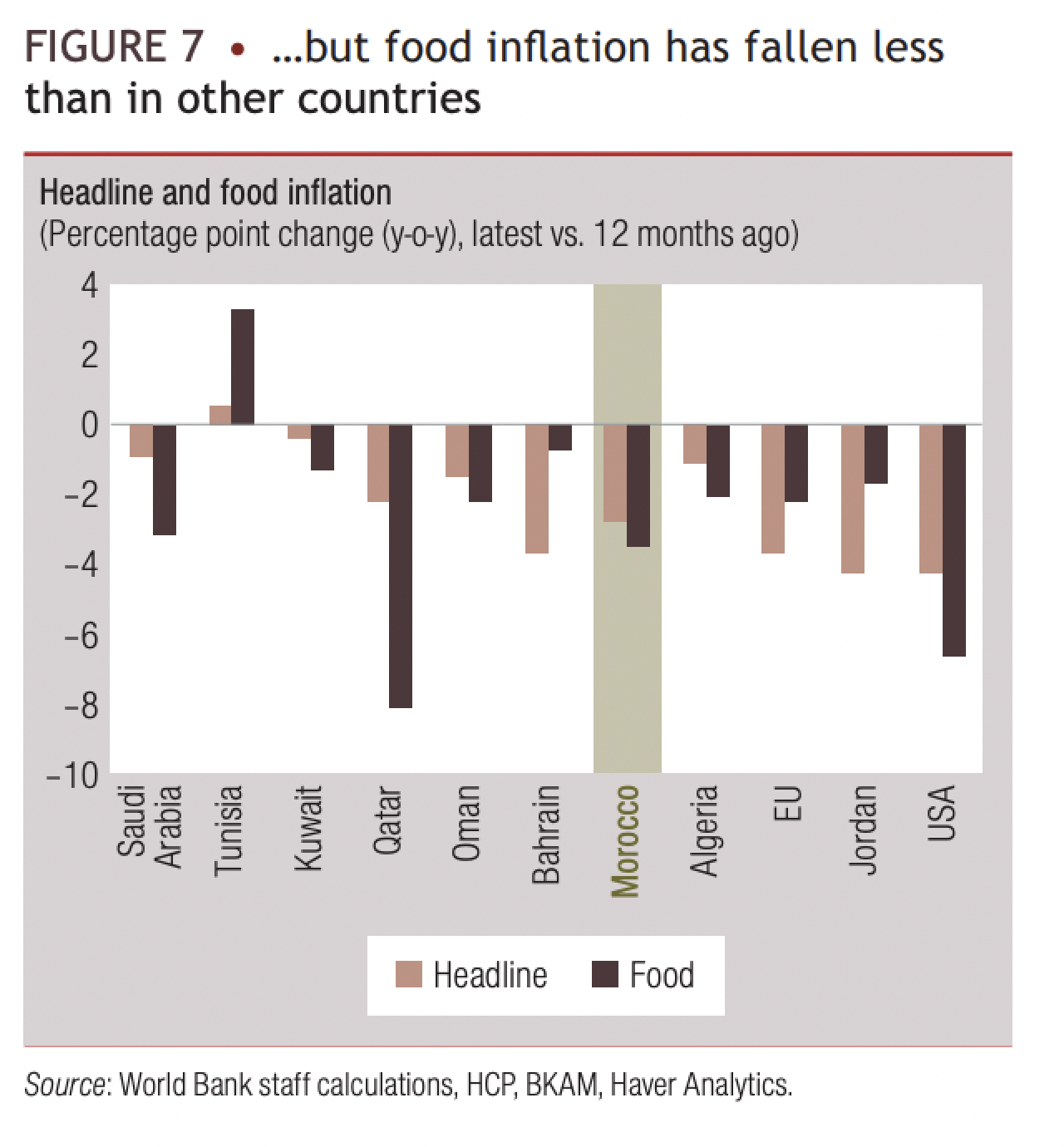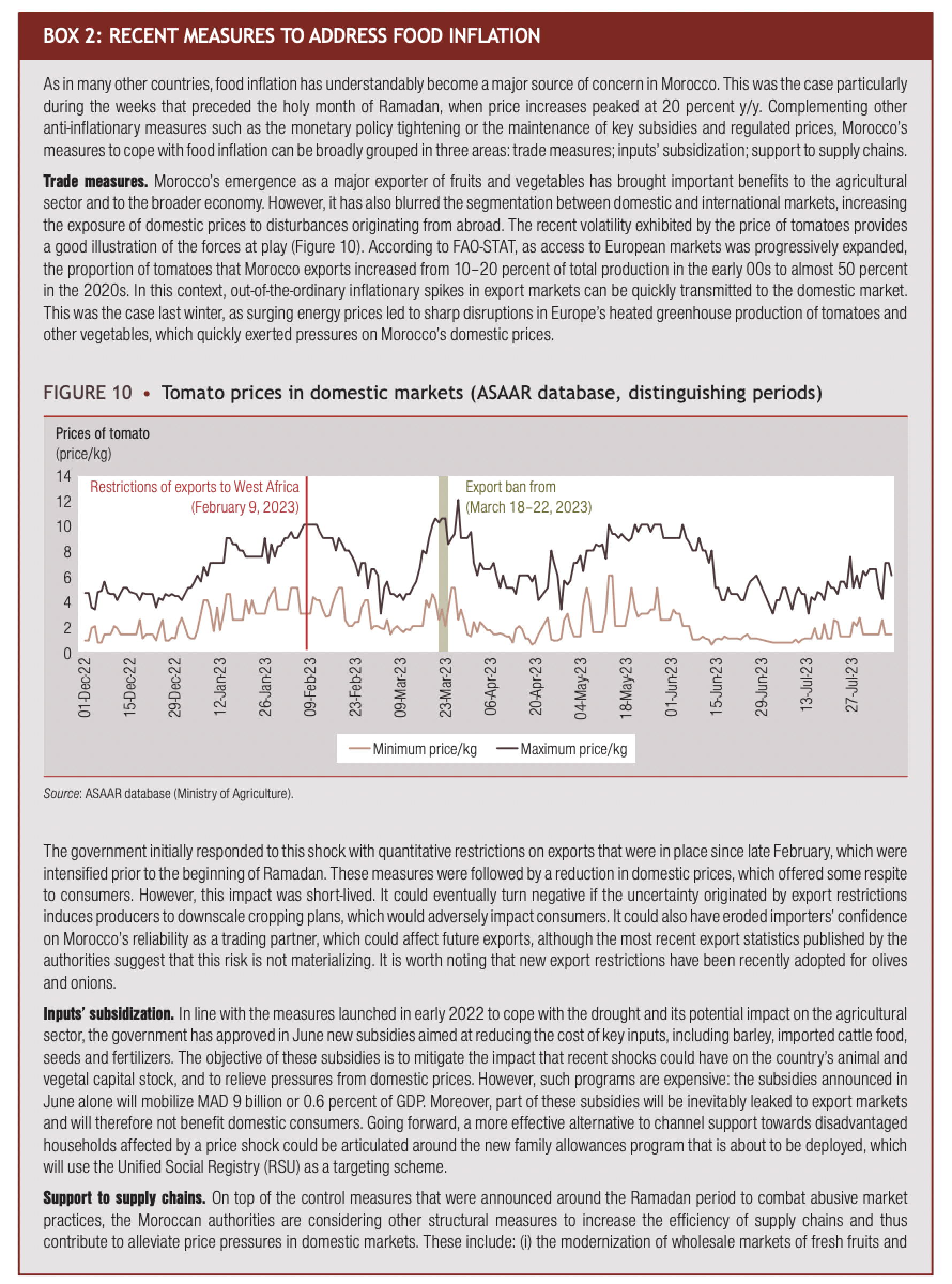Highlights on Food security:
The Special Focus of the ‘’Fall 2023’’ ME’ analyzes the impact of the inflationary surge across the income distribution. It shows that inflation is substantially higher for poorer households due to the larger weight of food in their consumption basket. Existing price subsidies have somewhat softened the impact of inflation on poverty and vulnerability. However, a disproportionate share of the public resources needed to sustain Morocco’s untargeted price subsidy schemes end up flowing to wealthier households, which in absolute terms consume more of the subsidized goods. In the future, a well targeted cash transfer program would constitute a more effective and efficient tool to mitigate the impact of the shock on poor and vulnerable households. This analysis also underlined the importance of computing high-frequency price indicators at the local level to improve the measurement and monitoring of poverty and vulnerability.
Morocco continues to face unusually dry conditions and key crops remain at risk. A succession of adverse climate shocks has resulted in abrupt fluctuations in the country’s agricultural output in recent years, with major impacts on overall GDP growth. In 2022, the production of cereals collapsed from 103 to 34 million quintals, and the resulting contraction of agricultural GDP (–12.9 percent on an annual basis) explains almost a third of the economic deceleration undergone that year. By contrast, due to a low base effect and to improved precipitations during the fall and winter months, agricultural value-added expanded by 6.6 percent year-on-year (y/y) in the first semester of 2023, making a substantial contribution to the ongoing economic recovery. However, Morocco has not yet overcome what has become one of the worst and longest droughts in its recent history, which could continue to have major impacts on an agricultural sector that still represents 10–12 percent of GDP and employs close to 30 percent of the labor force.

Despite the ongoing easing of price pressures, food inflation remains stubbornly high at 9.9 percent in September. As discussed in the previous edition of the MEU, food represents a higher portion of vulnerable households’ consumption basket, implying that the inflationary shock is likely to be having a disproportionate impact at the bottom of the income distribution. The government has adopted various measures to boost domestic supply as part of its anti-inflationary strategy. For instance, it began to temporarily restrict tomato exports in February amid surging import demand from Europe, a decision that had a significant impact on containing prices during the highly sensitive month of Ramadan, but which could discourage domestic production or compromise Morocco’s future presence in export markets
To absorb part of the cost increases undergone by the sector, emergency programs for cattle food (barley) and additional subsidies for seeds and fertilizers have also been approved. Finally, the authorities have reinforced controls over abusive market practices that distort prices while taking action to increase transparency. There is room to continue improving the efficiency of food supply chains to further moderate prices. Another public policy to contain food inflation has been the public support provided to road transport operators and the maintenance of electricity tariffs, aimed at avoiding the diffusion of higher energy prices to the broader economy.



| Year of publication | |
| Geographic coverage | Morocco |
| Originally published | 21 Nov 2023 |
| Related organisation(s) | World Bank |
| Knowledge service | Metadata | Global Food and Nutrition Security | Food security and food crises | Access to foodFood price crisisGender mainstreamingSafety net |
| Digital Europa Thesaurus (DET) | COVID-19Vulnerable groupsresiliencerisk managementinflationpolicymakinglabour marketeconomic analysisagricultural productionfiscal policyextreme weatherdrought |
